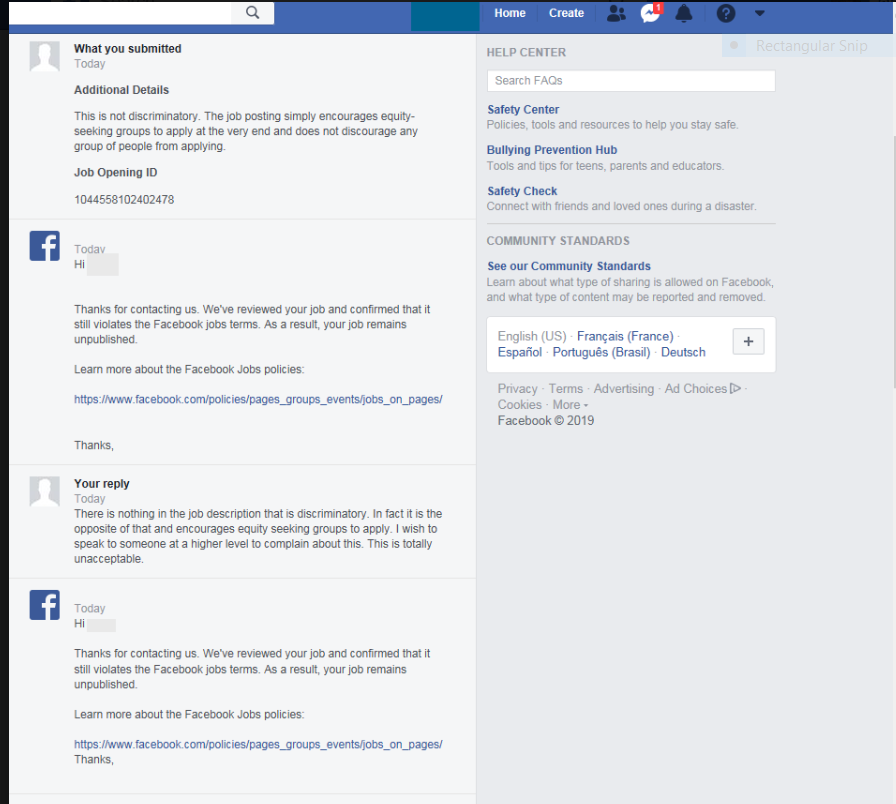Modern Career and HR Implications
For those of you who have been following my blog over the years, you may have noticed that I try to address modern issues regarding human resources and career development. The new rules around job searches are one of those topics. In the past, I have explored how automation has impacted our chances for meaningful employment through rigid electronic screening of candidates. Going forward, automation and artificial intelligence will affect many career paths.
 Similarly, I’ve written about how employees must keep up with the ever-evolving existence of digital tools (including social media) and recognize that it’s almost unavoidable presence will continue to grow in our personal and professional lives. I don’t think I am alone in appreciating how some past and current social media posts can be problematic when a potential or existing employee has done something questionable. And most notably a single impulsive tweet about quitting a job or hating a boss or denigrating a type of person can make or break someone’s professional reputation overnight.
Similarly, I’ve written about how employees must keep up with the ever-evolving existence of digital tools (including social media) and recognize that it’s almost unavoidable presence will continue to grow in our personal and professional lives. I don’t think I am alone in appreciating how some past and current social media posts can be problematic when a potential or existing employee has done something questionable. And most notably a single impulsive tweet about quitting a job or hating a boss or denigrating a type of person can make or break someone’s professional reputation overnight.
Digital Discrimination
When we think things through, the previous examples are predictable. Online screening is imperfect so certain good candidates will fall through the cracks. Likewise, bad online behaviour can be discovered via online search and make candidates ineligible for a job. With that said, who knew that social media has created another way to work against you finding suitable work? That’s right, there are algorithms and outreach strategies that amount to digital discrimination. These procedures exclude certain potential job candidates based on a candidate’s age, gender, race, and other traits. This means that people who are putting themselves “out there” via social media may also be “left out there” for just existing online. The worst part is that many potential applicants don’t even know that meaningful work opportunities are being intentionally withheld from their view.
 You may have heard about CBC’s recent report that companies have been using Facebook to restrict access to certain work opportunities. This is related to people who fall within a narrow age category, a blatant example of ageism. Mature workers can get screened out based on their age just by being less computer savvy and failing to protect themselves from algorithms. But even offline, mature job seekers may encounter job postings written with coded language like … “Looking for fresh, vibrant workers willing to work long hours, frequent travel, …” or stating “a more recent degree be preferred.” Clearly, those postings are geared toward younger job applicants.
You may have heard about CBC’s recent report that companies have been using Facebook to restrict access to certain work opportunities. This is related to people who fall within a narrow age category, a blatant example of ageism. Mature workers can get screened out based on their age just by being less computer savvy and failing to protect themselves from algorithms. But even offline, mature job seekers may encounter job postings written with coded language like … “Looking for fresh, vibrant workers willing to work long hours, frequent travel, …” or stating “a more recent degree be preferred.” Clearly, those postings are geared toward younger job applicants.
These are all implicit ways employers and corporations digitally exclude and discriminate against older, and often more qualified job applicants. But this digital discrimination isn’t limited to applicants who are closer to retirement.
Consequences and Implications of Digital Discrimination
The consequence of this social media-driven outreach process has evolved to a point where qualified job seekers (regardless of their age) will not even see the posting if it’s only shared via social media. For example, In March 2019 Facebook settled a lawsuit in the US “that accused the company of allowing advertisers to unlawfully discriminate against minorities, women, and the elderly by using the platform’s ad-targeting technology to exclude them from seeing ads for housing, jobs, and credit —three areas with legal protections for groups that historically have been disenfranchised.”
This reinforces the value of being on LinkedIn where most people don’t include their birthday or other personal information. It also implies that there are advantages to setting up social media accounts, including LinkedIn, that don’t include birth dates or graduation dates. Similarly, it’s easy to imagine that certain interests, hobbies, or participation in Facebook groups may be used as a proxy for other qualities (e.g., ethnicity, race, political affiliation, etc.) – and used as criteria to present or hide employment opportunities. I’ll note that LinkedIn is not perfect either. On April 27, 2019 screenshots were taken from a job posted online. “The otherwise fairly standard posting appeared on various sites, including LinkedIn, and began by stipulating that the job candidate be “Preferably Caucasian.”
Algorithms can make it hard to be an inclusive employer
On April 29, 2019, a Facebook post caught my attention. Due to a problematic algorithm, an employer couldn’t reach out to a full range of potential employees. He was trying to encourage members of underrepresented groups to apply, but Facebook interpreted it as excluding others.
The irony is that Facebook can’t detect other forms of exclusion. They responded by saying: “Thanks for contacting us. We reviewed your job and confirmed that it still violates the Facebook jobs terms. As a result, your job remains unpublished.” In response, the Hiring Manager noted: “This is not discriminatory. The job posting simply encourages equity-seeking groups to apply at the very end and does not encourage any group of people from applying.” As of the time of writing this article on May 2, 2019, this issue remained unresolved.
As a Career Psychologist and HR Consultant, I find this new form of digital discrimination disheartening. I believe that we’re on a slippery slope. Countless potentially qualified job applicants will be rejected within this vast digital world. It’s counterproductive and illogical for organizations to narrow their search for talent at a time when more innovation and better workplace cultures are clearly linked to better financial outcomes. I also find the use of algorithms built on predominantly white samples (which may include a restricted range of potential behaviours) being used to screen applicants for leadership positions problematic. If the “target” behaviours and characteristics were not included in the algorithm then those behaviours and characteristics are likely to be treated as “wrong.”
Do you need help navigating the world of work? Contact Dr. Helen today for a free and confidential initial consultation by phone, email, or via direct message on Twitter, Facebook, or LinkedIn. If something urgent comes up, I’m also available by a voice or video on Magnifi, an expertise-on-demand app.
Have you ever wished you could get inside the head of a hiring manager? You can. Dr. Helen Ofosu is a Career Coach/Counsellor with a difference. She has worked for organizations to create hiring and screening tools. She’s created countless pre-screening tests, interviews, simulations, and role plays for organizations of all kinds.
Dr. Helen’s training in Industrial and Organizational (I/O) Psychology means she is a genuine expert in evaluating work-related behaviours. She uses those skills to help hiring managers tell the difference between people who say the right things during interviews and people who actually deliver on the job. In other words, Dr. Helen understands first-hand how job candidates are assessed.
More than career coaching, it’s career psychology®.
I/O Advisory Services – Building Resilient Careers and Organizations.
Please share this article using any of the social media icons below.




